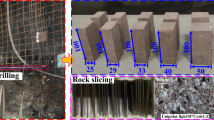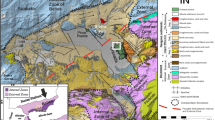Abstract
The construction of major marine infrastructure projects and the exploration and development of deep-sea mineral resources require fine imaging of seabed strata and structures. The high-resolution marine seismic exploration based on a high broadband sparker source is an important approach to reveal seabed stratum and reservoir structure, and identify geohazard. To optimize the performance of sparker seismic source, we investigated the electro-acoustic characteristics of spark discharge under conditions of different charging voltages and electrode numbers. Results show that the sound source level increased with the increase of the charging voltage, whereas the main frequency decreased when the charging voltage increases. In addition, it was found that the charging capacitance had more obvious influence on the main frequency than the sound source level did. Although the load energy decreased with increasing electrode number, the sound source level still increased but the main frequency decreased. Meanwhile, the primary to bubble (P/B) ratio increased with the increase of the electrode number. To gain a deeper insight into the electro-acoustic characteristics, we investigate the relationship between sound source level and power peak, from which a good correlation was observed. A more practical statistical analysis on the rise rate of current was processed, and a perfect logarithmic function was derived. Furthermore, we found that the main frequency was most possibly subjected to the electrical energy, especially the charging energy per electrode. The results indicate that the charging energy per electrode less than 10 J could increase the main frequency to above 300 Hz. At last, the main frequency could be reduced to 20 Hz when the charging energy of a single-electrode discharge was enhanced to over 4 kJ. This study shall be helpful in develo** a sparker seismic source and improving the performance for marine engineering exploration and geohazard assessment.
Similar content being viewed by others
Data Availability Statement
All data generated and/or analyzed during this study are available from the corresponding author on reasonable request.
References
Abadi S H, Freneau E. 2019. Short-range propagation characteristics of airgun pulses during marine seismic reflection surveys. The Journal of the Acoustical Society of America, 146(4): 2430–2442, https://doi.org/10.1121/1.5127843.
Ainslie M A, Heaney K D, MacGillivray A O. 2018. Special issue on verification and validation of airgun source signature and sound propagation models. IEEE Journal of Oceanic Engineering, 43(1): 280–281, https://doi.org/10.1109/JOE.2017.2783979.
Buogo S, Plocek J, Vokurka K. 2009. Efficiency of energy conversion in underwater spark discharges and associated bubble oscillations: experimental results. Acta Acustica united with Acustica, 95(1): 46–59, https://doi.org/10.3813/AAA.918126.
Chung K J, Lee S G, Hwang Y S et al. 2015. Modeling of pulsed spark discharge in water and its application to well cleaning. Current Applied Physics, 15(9): 977–986, https://doi.org/10.1016/j.cap.2015.05.010.
Cook J A, Gleeson A M, Roberts R M et al. 1997. A spark-generated bubble model with semi-empirical mass transport. The Journal of the Acoustical Society of America, 101(4): 1908–1920, https://doi.org/10.1121/1.418236.
Crocker S E, Fratantonio F D, Hart P E et al. 2019. Measurement of sounds emitted by certain high-resolution geophysical survey systems. IEEE Journal of Oceanic Engineering, 44(3): 796–813, https://doi.org/10.1109/JOE.2018.2829958.
Deruiter S L, Tyack P L, Lin Y T et al. 2006. Modeling acoustic propagation of airgun array pulses recorded on tagged sperm whales (Physeter macrocephalus). The Journal of the Acoustical Society of America, 120(6): 4100–4114, https://doi.org/10.1121/L2359705.
Fong S W, Adhikari D, Klaseboer E et al. 2009. Interactions of multiple spark-generated bubbles with phase differences. Experiments in Fluids, 46(4): 705–724, https://doi.org/10.1007/s00348-008-0603-4.
Huang Y F, Yan H, Wang B Z et al. 2014. The electro-acoustic transition process of pulsed corona discharge in conductive water. Journal of Physics D: Applied Physics, 47(25): 255204, https://doi.org/10.1088/0022-3727/47/25/255204.
Huang Y F, Zhang L C, Yan H et al. 2016. Experimental study of the electric pulse-width effect on the acoustic pulse of a plasma sparker. IEEE Journal of Oceanic Engineering, 41(3): 724–730, https://doi.org/10.1109/JOE.2015.2471635.
Kluesner J, Brothers D, Hart P et al. 2019. Practical approaches to maximizing the resolution of sparker seismic reflection data. Marine Geophysical Research, 40(3): 279–301, https://doi.org/10.1007/s11001-018-9367-2.
Kozyrev A, Zherlitsyn A, Semeniuk N. 2022. Pulsed high-current discharge in water: adiabatic model of expanding plasma channel and acoustic wave. Plasma Science and Technology, 24(3): 035402, https://doi.org/10.1088/2058-6272/ac3973.
Liu Z, Guan X T, Zhang L C et al. 2021. Investigations of dynamics of a single spark-induced bubble in saline water. Journal of Physics D: Applied Physics, 54(7): 075203, https://doi.org/10.1088/1361-6463/abc4aa.
Lu X P, Pan Y, Liu K F et al. 2002. Spark model of pulsed discharge in water. Journal of Applied Physics, 91(1): 24–31, https://doi.org/10.1063/L1420765.
Luo D, Cai F, Wu Z Q. 2017. Numerical simulation for accuracy of velocity analysis in small-scale high-resolution marine multichannel seismic technology. Journal of Ocean University of China, 16(3): 370–382, https://doi.org/10.1007/s11802-017-3145-7.
Pei Y L, Kan G M, Zhang L C et al. 2019. Characteristics of source wavelets generated by two sparkers. Journal of Applied Geophysics, 170: 103819, https://doi.org/10.1016/j.jappgeo.2019.103819.
Pei Y L, Zhang L C, Huang Y F et al. 2017. Discharge electrode configuration effects on the performance of a plasma sparker. Plasma Science and Technology, 19(9): 095401, https://doi.org/10.1088/2058-6272/aa7332.
Roberts R M, Cook J A, Rogers R L et al. 1996. The energy partition of underwater sparks. The Journal of the Acoustical Society of America, 99(6): 3465–3475, https://doi.org/10.1121/1.414993.
Shan M L, Chen B Y, Yao C et al. 2019. Electric characteristic and cavitation bubble dynamics using underwater pulsed discharge. Plasma Science and Technology, 21(7): 074002, https://doi.org/10.1088/2058-6272/ab0b62.
Wang J N, Rong M Z, Liu Y X et al. 2019. Bubble evolution mechanism of pulse spark discharge in seawater. Journal of Physics D: Applied Physics, 52(28): 285201, https://doi.org/10.1088/1361-6463/ab16b6.
Zhang L C, Ding S D, Pei Y L et al. 2022. Experimental study of multi-bubble hydraulic efficiency of spark-generated bubbles. AIP Advances, 12(9): 095215, https://doi.org/10.1063/5.0100591.
Zhang L C, Zhu X L, Huang Y F et al. 2016. Development of a simple model for predicting the spark-induced bubble behavior under different ambient pressures. Journal of Applied Physics, 120(4): 043302, https://doi.org/10.1063/1.4959082.
Zhang Q, Luo J, Zhai Y W et al. 2018. Improved instruments and methods for the photographic study of spark-induced cavitation bubbles. Water, 10(11): 1683, https://doi.org/10.3390/w10111683.
Zhao P F, Roy S. 2014. A modified resistance equation for modeling underwater spark discharge with salinity and high pressure conditions. Journal of Applied Physics, 115(17): 173301, https://doi.org/10.1063/L4874184.
Author information
Authors and Affiliations
Corresponding author
Additional information
Supported by the National Natural Science Foundation of China (No. 42276195), the Natural Science Foundation of Zhejiang Province (No. LQ22D060006), and the Science Foundation of Zhejiang Sci-Tech University (No. 21022092-Y)
Rights and permissions
About this article
Cite this article
Li, J., Liu, K., Zhang, L. et al. On electro-acoustic characteristics of a marine broadband sparker for seismic exploration. J. Ocean. Limnol. 42, 760–771 (2024). https://doi.org/10.1007/s00343-023-3131-4
Received:
Accepted:
Published:
Issue Date:
DOI: https://doi.org/10.1007/s00343-023-3131-4




